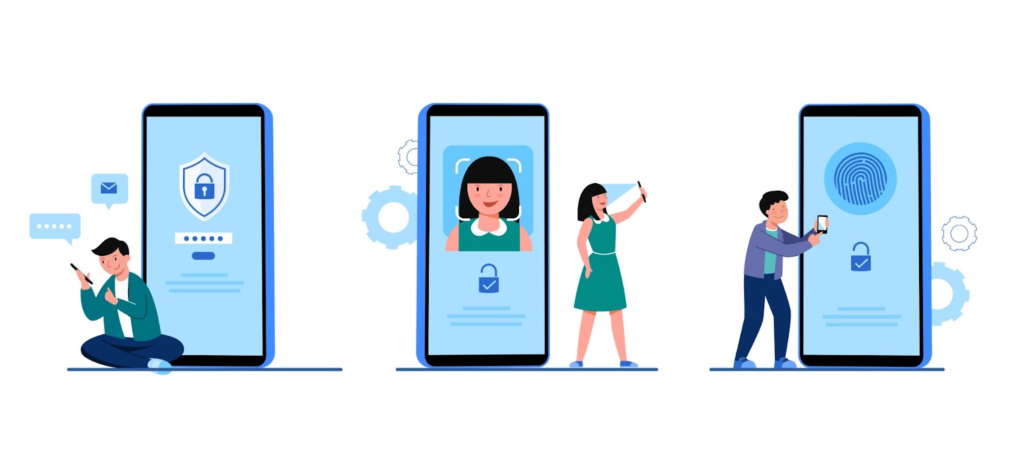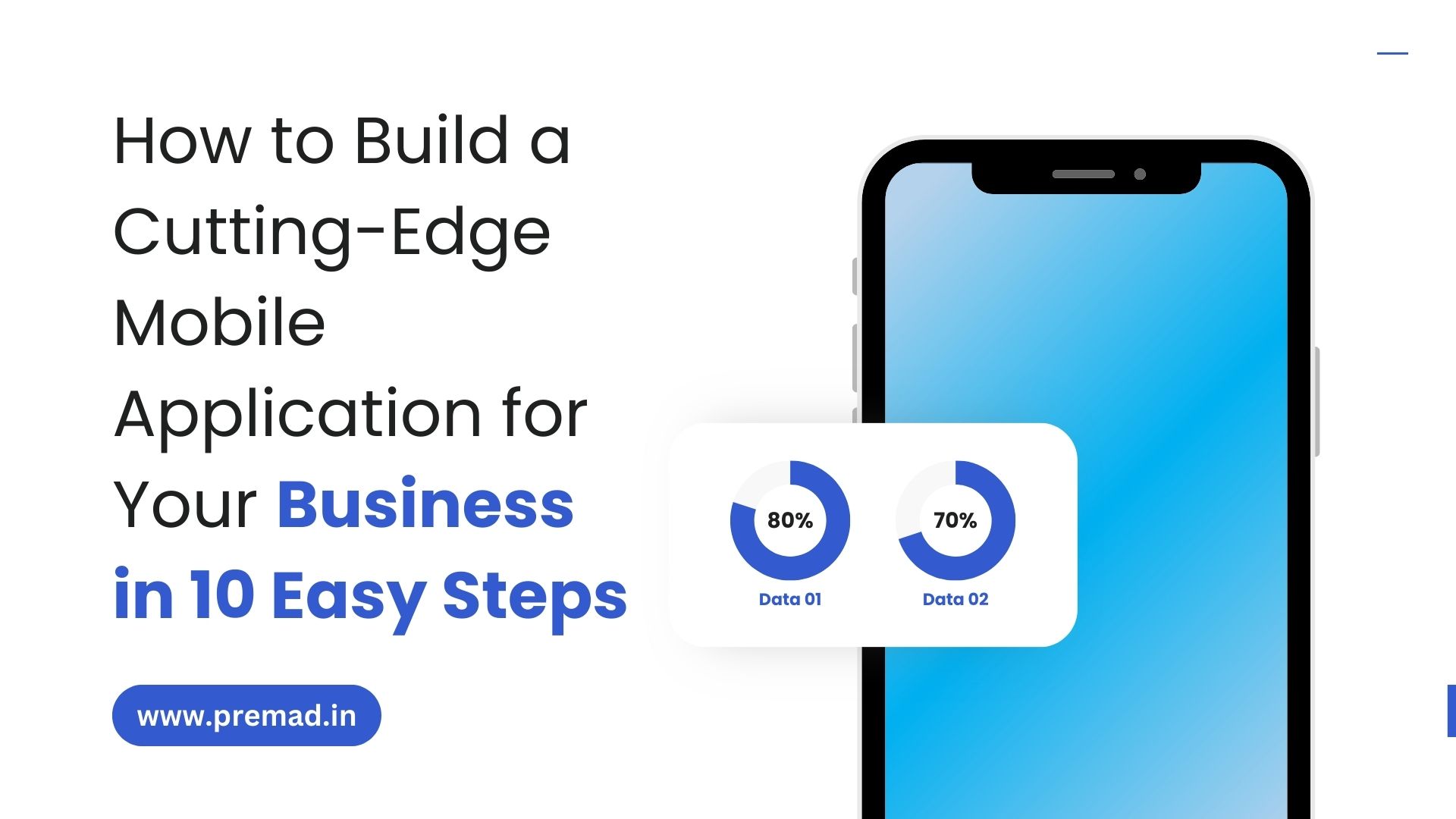In today’s fast-paced digital world, mobile applications are becoming increasingly essential for businesses to stay competitive. With the majority of consumers using mobile devices to shop, communicate, and surf the web, having a mobile application for your business is no longer a luxury but a necessity. But how do you create a mobile application that stands out and meets the needs of your customers?
In this blog post, we will delve into the world of mobile application design and development, exploring the key components of a successful mobile application, and how it can unlock your business’s potential. We’ll look at how to create a user-friendly interface, the importance of functionality, and how to optimize your application for search engines.
So, if you’re looking to take your business to the next level, read on for our top tips on creating a successful mobile application.

The Importance of Mobile Application Design and Development
The importance of mobile application design and development cannot be overemphasized in today’s business world. As the number of mobile users continues to increase, businesses must embrace mobile applications as a means of reaching out to their customers. A well-designed and developed mobile application can make all the difference in the success of a business. It can help to increase customer engagement, boost sales, improve customer loyalty, and enhance the overall customer experience.
In addition, a mobile application can help businesses to stay ahead of their competitors. With the right features and functionalities, a mobile application can provide a seamless and personalized experience for customers, making them more likely to choose your business over others.
Moreover, mobile applications can help businesses to streamline their operations, reduce costs and improve efficiency. By automating certain processes, businesses can save time and resources, allowing them to focus on other important aspects of their business.
In conclusion, mobile application design and development is essential for any business looking to unlock its full potential in today’s digital age. By embracing mobile technology, businesses can reach out to a wider audience, improve customer engagement, boost sales, and enhance their overall brand image.
Understanding the Benefits of Mobile Applications for Businesses
Mobile applications have become an essential part of our daily lives. As technology advances, so does the need for businesses to adapt to new trends to keep up with their customer’s demands. Mobile applications are one of the most popular trends that businesses are adopting to stay ahead of the competition. Business organisations can profit greatly from mobile applications.
Firstly, they provide a platform for businesses to communicate with their customers in real-time. This means that businesses can provide their customers with instant updates, promotions, and personalized messages, resulting in increased engagement and customer loyalty.
Secondly, mobile applications offer businesses the opportunity to expand their customer base. With the increasing number of smartphone users, mobile applications provide businesses with a new channel to reach out to potential customers and convert them into loyal customers.
Thirdly, mobile applications improve customer experience. A well-designed mobile application can provide customers with a seamless and enjoyable experience, making it easier for them to interact with the business and purchase products or services
In summary, mobile applications offer numerous benefits to businesses. They provide a new channel to communicate with customers, expand the customer base, improve customer experience, and streamline business operations. Hence, it is essential for businesses to embrace mobile application design and development to unlock their full potential and stay ahead of the competition.
Mobile Application Design: How to Create a Stunning User Interface
Creating a stunning user interface is crucial when developing a mobile application. After all, the user interface is what your users will interact with most. Your interface should be user-friendly, intuitive, and visually attractive, in order to keep users engaged and coming back to your app.
When designing your interface, you need to consider the app’s navigation, layout, colour scheme, typography, and overall style. Navigation should be simple and easy to use, with clear buttons and icons. The layout should be logical and organized, with the most important features and functions prominently displayed.

The colour scheme should be consistent and visually pleasing, while typography should be legible and easy to read When it comes to style, it’s important to choose a design that is cohesive with your brand and identity. This will help to establish your app as an extension of your business, while also standing out in a crowded app store.
You should also consider the size and resolution of mobile screens, which can vary greatly across different devices. Your interface should be optimized for multiple screen sizes, ensuring that it looks great on all devices.
By taking the time to create a stunning user interface, you’ll be able to provide your users with an enjoyable and memorable experience. This will not only increase user engagement but also help to establish your brand as a leader in the mobile app industry. If you want to create UI/UX, you should also consider connecting with Premad Software Solutions that offer the most creative solutions with the best UI/UX and mobile design and development company in Jaipur.
Mobile application development: How to Choose The Right Platform for Your Business Needs
Mobile application development is a critical step towards unlocking your business potential. One of the key decisions that you will have to make during the application development process is choosing the right platform for your business needs. There are two main platforms to choose from: iOS and Android.
Each platform has its unique features, advantages, and disadvantages that you should consider before making your decision. If you’re looking to develop an app that will cater to a global audience, Android is probably the best platform for you. Android has a larger market share and is used by more people worldwide.
However, if you’re looking to develop an app for a specific target audience, iOS may be the better choice. iOS users are typically more affluent and spend more money on apps than Android users.
Another crucial factor to consider when choosing a platform is the development cost. Developing an app for iOS tends to be more expensive than developing one for Android. This is because iOS apps require more time and effort to build due to the platform’s strict guidelines and the need to develop separate versions for iPad and iPhone.
Ultimately, the right platform for your business needs will depend on your budget, target audience, and the features you need in your app. It’s important to conduct thorough research and seek professional advice to make an informed decision that will help you achieve your business goals. By choosing the right platform, you will be well on your way to unlocking your business potential through mobile application development.
The Importance of User Experience in Mobile Application Development
When it comes to mobile application development, the user experience is crucial. A poorly designed app with a bad user experience can quickly lead to negative reviews, low ratings, and ultimately, uninstalls. On the other hand, a well-designed app with a positive user experience can lead to happy customers, high ratings, and increased retention rates.
To create a great user experience, it’s important to understand your target audience and their needs. You should conduct user research and usability testing to gather feedback and identify pain points in the user journey. This information can then be used to create a user-centred design that addresses these issues and provides a seamless user experience.
Ultimately, a great user experience is key to unlocking the potential of your mobile application. By focusing on usability, user research, and visual design, you can create an app that not only meets the needs of your target audience but also stands out from the competition.

Security Considerations in Mobile Application Design and Development
Security is a crucial aspect of mobile application design and development. Without adequate measures in place, your app could be at risk of attack, data breach, or unauthorized access. This could result in a loss of trust from your users, legal issues, and damage to your brand reputation. To ensure the security of your mobile application, it’s important to implement certain measures during the design and development process.
ALSO READ Revolutionizing HR Industries: Exploring Modern HRM Software Solution
One important step is to use encryption to protect sensitive data, such as user login credentials or payment information. This ensures that even if someone gains access to your app’s data, they won’t be able to read it without the encryption key. By taking these security considerations seriously, you can ensure that your mobile application is secure and trustworthy, which will help to build trust with your users and protect your brand reputation.
Testing and Debugging Mobile Applications
Testing and debugging mobile applications is a crucial step in the mobile app design and development process. Test the app’s functionality, usability, and performance on different devices and operating systems can ensure that the app works seamlessly and delivers a great user experience across the board. It’s important to test the app under different network conditions, such as 2G, 3G, 4G, and Wi-Fi connections, to ensure that the app can handle slow network speeds and interruptions.
User testing is also a critical step in the testing process. User testing involves getting feedback from real users who interact with the app and can provide valuable insights into how the app can be improved. This feedback can help you identify any usability issues and make adjustments to the app’s design and functionality accordingly.
Launching Your Mobile Application to The Market
Launching your mobile application to the market is a crucial step in the development process. It’s important to make sure that your application is ready to be launched and that it meets your business goals. Before launching, make sure that the application has been thoroughly tested to ensure that it works as intended. This includes testing for bugs, compatibility issues, and usability. It’s also important to make sure that the application is optimized for different devices and operating systems.
When launching your mobile application, it’s important to have a solid marketing plan in place. This includes identifying your target audience, creating a buzz around your application, and promoting it through various channels. Social media is a great way to promote your application and reach out to potential users. You can also reach out to bloggers and influencers in your industry to review your application and offer their feedback.
Lastly, make sure that you have a way to track your application’s performance. This includes monitoring downloads, user engagement, and revenue. This information will help you make informed decisions about future updates and improvements to your application.
In conclusion, launching your mobile application to the market requires careful planning, testing, and marketing. By following these steps, you can ensure that your application meets your business goals and provides value to your users.
Mobile Application Maintenance and Updates
Mobile application maintenance and updates are essential for the success of any business’s mobile app. It’s not enough to simply create an app and then leave it untouched. To keep up with the ever-changing digital landscape, it’s important to regularly update and maintain your mobile app to provide the best possible user experience.
Updating your app can involve fixing bugs, adding new features, or improving existing ones. It’s important to listen to customer feedback and make changes accordingly. By doing so, you’ll be able to provide your users with the best possible experience and keep them engaged with your brand. Failing to keep your mobile app up-to-date and well-maintained can lead to negative reviews and a decrease in user engagement.
On the other hand, regularly updating and maintaining your app can lead to increased customer satisfaction and loyalty, ultimately resulting in a positive impact on your business’s bottom line.
In short, investing in mobile app maintenance and updates is essential for the success of your business’s mobile app and overall business potential.

Measuring The Success of Your Mobile Application
Measuring the success of your mobile application is crucial to understand its impact on your business. There are several key performance indicators (KPIs) that you should track to determine the effectiveness of your mobile app. These include the number of downloads, user retention rates, engagement metrics, and revenue generated.
The number of downloads indicates how many people have installed your app, while user retention rates measure how many of those users continue to use your app over time. Engagement metrics such as average session length, number of sessions per user, and click-through rates can provide insight into how users interact with your app and how engaged they are with your brand.
It’s important to regularly monitor these KPIs and use them to inform changes to your app or marketing strategies. If you notice a drop in user retention rates, for example, you may need to improve the user experience or offer new features to keep users engaged. By measuring and adjusting your mobile app strategy, you can ensure that it continues to drive business growth and success.
Bottom line
In conclusion, understanding the design and development of mobile applications opens you to a world of limitless opportunities. Mobile applications have changed the way we use technology and have been incorporated into every aspect of our life. We can maximise the potential of mobile apps by putting a focus on user experience design, Security Considerations, Maintenance and Updates and remaining current with evolving technology. They have the potential to transform industries, improve services, and promote constructive social change. To create revolutionary experiences for users all around the world as we look to the future, it is essential to keep supporting innovation and creativity in this area.




One thought on “Unlocking Potential: Mobile Application Design and Development”